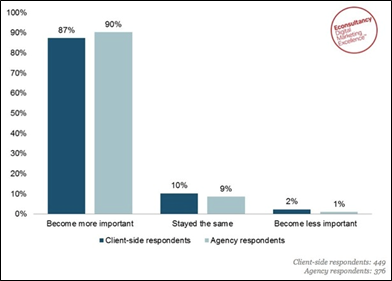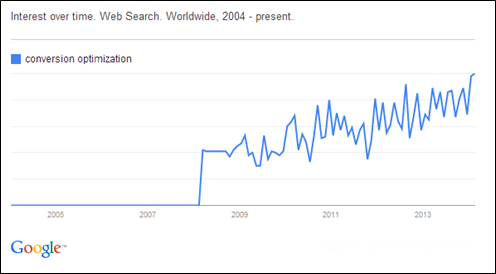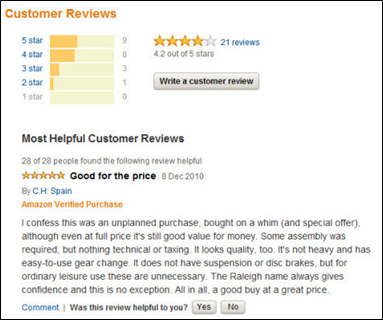
Many business owners jumping into the Digital Marketing bandwagon naturally develop this basic notion that all they have to do in achieving their Internet marketing goals is to drive tons of traffic right into their websites. However, they fail to realize that the most important aspect towards Digital Marketing success is not web traffic but conversion – turning a good percentage of your website visitors into business leads or even sales.
The process of improving your Digital Marketing conversion rates is aptly called Conversion Rate Optimization. It is one of the most overlooked processes in Digital Marketing but it is during this stage where the main purpose of your website should be realized – whether to gather contact information, increase subscription to a newsletter or training program, or product purchase.
The infographic (click to zoom):
2013 was the year when digital marketer saw the importance of conversion optimization, enough to make it their top priority alongside content marketing.

Other reports like the fifth annual Conversion Rate Optimization Report from EConsultancy and Redeye backs this trend, highlighting that upt to 59% of online businesses have realized the utmost importance of conversion rate optimization to their overall Internet marketing campaign efforts.

The growing interest for conversion rate optimization among businesses and digital marketers is confirmed by none other than Google itself, which shows a considerably upward trend in conversion optimization interest as highlighting in Google Trends. This is just a clear indication of how crucial increasing your digital marketing conversion rates is – and you can start with these 7 tips.

1) Optimize Your Page Load Speed
Improving how fast your web page loads is definitely one of the most important factors digital marketers overlooked to improve their digital marketing conversion rates. Many have the tendency of loading their sites with heavy graphics, videos, and other plugins that slows down loading speed considerably. They don’t realize that 47% of people expect pages to load within 2 seconds, and 47% of visitors will abandon the site if it doesn’t load within 3 seconds, according to a report from Akamai.
Google’s own Matt Cutts announced way back in 2010 that page loading speed can be a ranking factor that affects search engine results. So, you should just realize how important page load speed is not only with your conversion rates but also your search engine optimization. The key here is to identify what web elements are affecting your page loading speed – HTML code, graphics, advertisements, file compression, etc – and try to speed things up!
2) Optimize Social Validation and Testimonials
Social media has emerged to be a very significant digital marketing factor, so it is but natural to include social media signals as part of your conversion rate optimization plan. The Nielsen Global Online Consumer Survey establishes the fact that 90% of the more than 25 thousand consumers from 50 countries surveyed say they trust what people they know say about a particular brand, product or service.
What this implies is that they would most like respond to a call to action if one or more of their social media friends have previously done so – or is recommending that they do. You can add social proof and testimonials together with information or content about your brand, products or services. The best location for such testimonials to appear on your site is near the Call-to-Action section – and let these social proofs prod your visitors to convert into leads or sales right there and then.
3) Optimize Your Sign Up Forms
One of the biggest mistakes digital marketers make is to copy/paste sign up form templates and embed them into their sites without making any customizations or optimizations. Many of these generic forms would ask online users with a bunch of questions, some personal even, that will really not help or urge them to convert. Some may even be turned off and leave without finishing the sign up form, feeling that they’re just wasting their time.
The key to optimizing your sign up forms is to focus only on the most basic information you will need to make conversion complete. Contrary to what others may think, the Captcha field is not really appealing to online users. Spam is your problem, not theirs, so don’t burden them with such time-consuming controls. Choose forms that can validate and check errors inline instead of after web form submission to be more efficient and save time.
4) Optimize Your Location Targeting
One mistake digital marketers do is to create campaigns that target almost everybody in the planet. That would be good if you have the capability to market and deliver products or services to anywhere in the world. You might get website traffic from as far away as Timbuktu, but it doesn’t mean that they’ll avail of your products or services – or you have the capacity to deliver to this part of the world.
But if your intent is to target only customers near a specific geographical location, then optimize your website and landing pages specifically for that location. Doing so, you may experience a decrease in web traffic, but the traffic generated will be highly targeted to potential customers near your area of operations who may be more than ready to avail of your products or services.
5) Optimize Your Template and Content for Conversion
Many business owners and digital marketers tend to rely on “custom” templates they buy or subscribe to for their landing pages, banking on promises that such templates will drive conversion rates up. Although this is not really a bad thing, but you’ll need to customize and optimize your landing page content and other web elements if you want to increase your conversions. The key to digital marketing success is to establish a connection with your targeted audiences well enough for them to take the next step further and become a subscriber or even a customer. Templates may not have the capability to do that as is. They need to be “tweaked” a bit more so they’ll fit right well with your targeted audiences’ profile.
6) Optimize Your Product Reviews
Testimonials, as mentioned earlier, will influence the buying patterns of your website visitors particularly if these come from people they knew from their social media circles. You can take the power of testimonials a step further by using optimized product reviews. Nielsen’s Global Trust in Advertising Survey 2011 confirms this when they highlighted that more than 70% of respondents will trust consumer opinions about a product or service.
However, simply posting product reviews as is will guarantee your credibility enough to influence people to convert. Reviews should be: believable, help potential customers in the decision process, and eliminate doubts or objections others may have about the product or service.The rate system also adds to the overall impact of the review, making it more realistic and credible, in the same manner Amazon makes use of in their product reviews. To enhance the impact even more, you can add in additional sections like “Top Reviewer”, “Top Contributor” and “Most Helpful Customer Reviews” to put more air of authority and credibility to your reviews.

7) Optimize Your Call-to-Action Buttons
The Call-to-Action is definitely and obviously a must for your landing pages. How will you expect your targeted customers to take action if you don’t specify what you want them to do next? Digital marketers may be aware of the importance of the Call-To-Action per se, but what is little known is the importance of optimizing the Call-To-Action button itself. Buttons are a natural magnet for click through unlike ordinary text links, but they should clearly specify the type of actions you want your page visitors to do: Sign Up, Download, Like, Buy or Call.

The location of where you position your buttons is also critical. It would be wise to have it above the fold of your screen so visitors don’t need to scroll down to take action. However, it would also be wise to place duplicates (or variations) of these Call-To-Action buttons intermittently across the page: basically above the fold, halfway through your content, and the last section. If you offer both free and paid options, you must place corresponding buttons side-by-side, with each button clearly distinguishable in bright colors and easy-to-read fonts.
There are clearly more ways to increase your Digital Marketing conversion rates aside from these seven that have just been presented. It would be wise to learn more about these techniques and study how you can tailor-fit each of these techniques to suit the particulars your digital marketing campaigns are taking. The key here is to take action, just like what your Calls to Action ought to generate from your website visitors – and taking action on these 7 tips Digital Marketing Philippines has just presented is definitely a concrete step for getting your targeted conversion rates.
Jomer B. Gregorio is a well-rounded expert when it comes digital marketing. Jomer is also known as a semantic SEO evangelist and practitioner. Check out our Digital Marketing Services today and let us help you in achieving positive and profitable results for your business.

